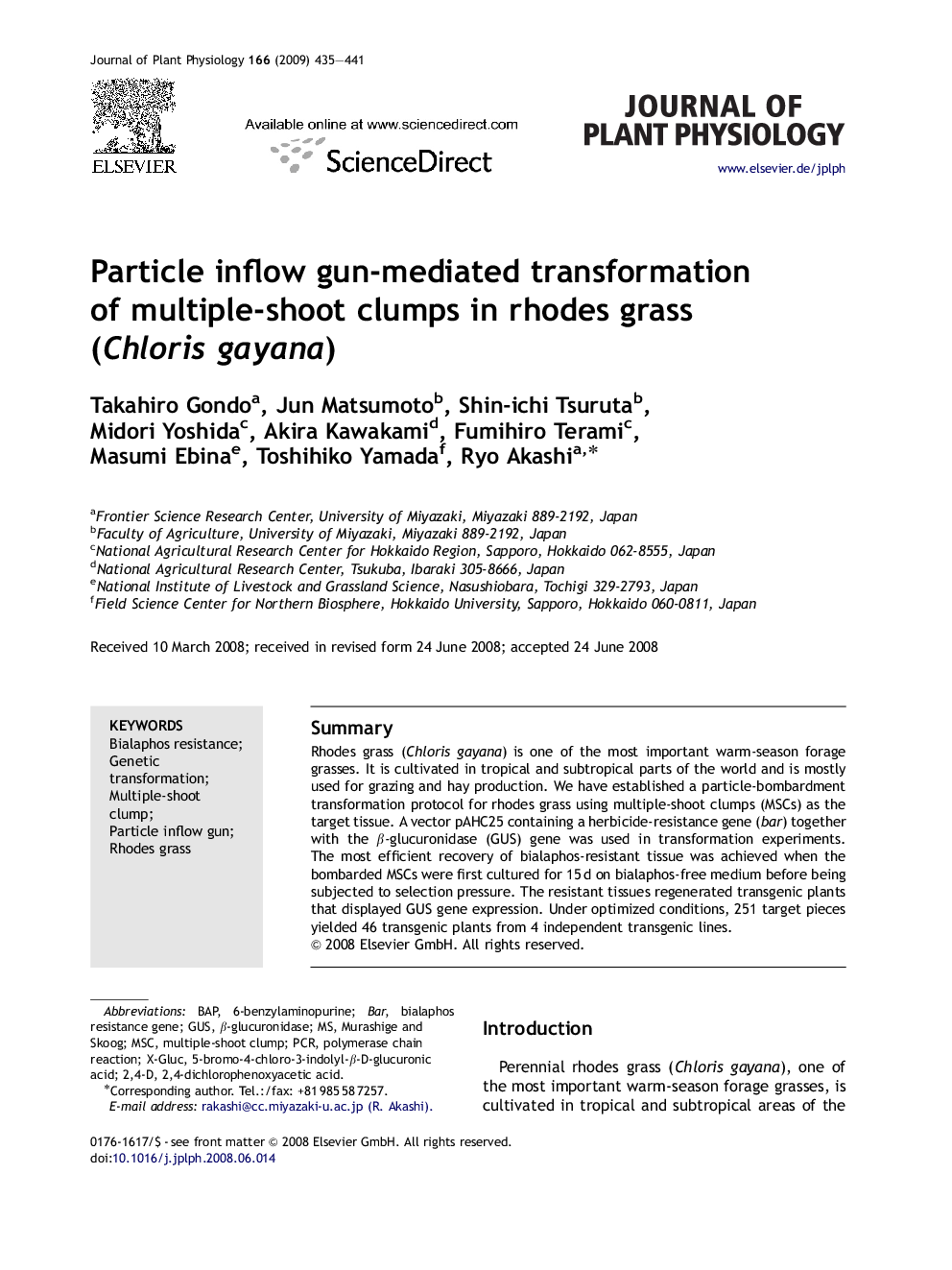| Article ID | Journal | Published Year | Pages | File Type |
|---|---|---|---|---|
| 2057028 | Journal of Plant Physiology | 2009 | 7 Pages |
SummaryRhodes grass (Chloris gayana) is one of the most important warm-season forage grasses. It is cultivated in tropical and subtropical parts of the world and is mostly used for grazing and hay production. We have established a particle-bombardment transformation protocol for rhodes grass using multiple-shoot clumps (MSCs) as the target tissue. A vector pAHC25 containing a herbicide-resistance gene (bar) together with the β-glucuronidase (GUS) gene was used in transformation experiments. The most efficient recovery of bialaphos-resistant tissue was achieved when the bombarded MSCs were first cultured for 15 d on bialaphos-free medium before being subjected to selection pressure. The resistant tissues regenerated transgenic plants that displayed GUS gene expression. Under optimized conditions, 251 target pieces yielded 46 transgenic plants from 4 independent transgenic lines.
